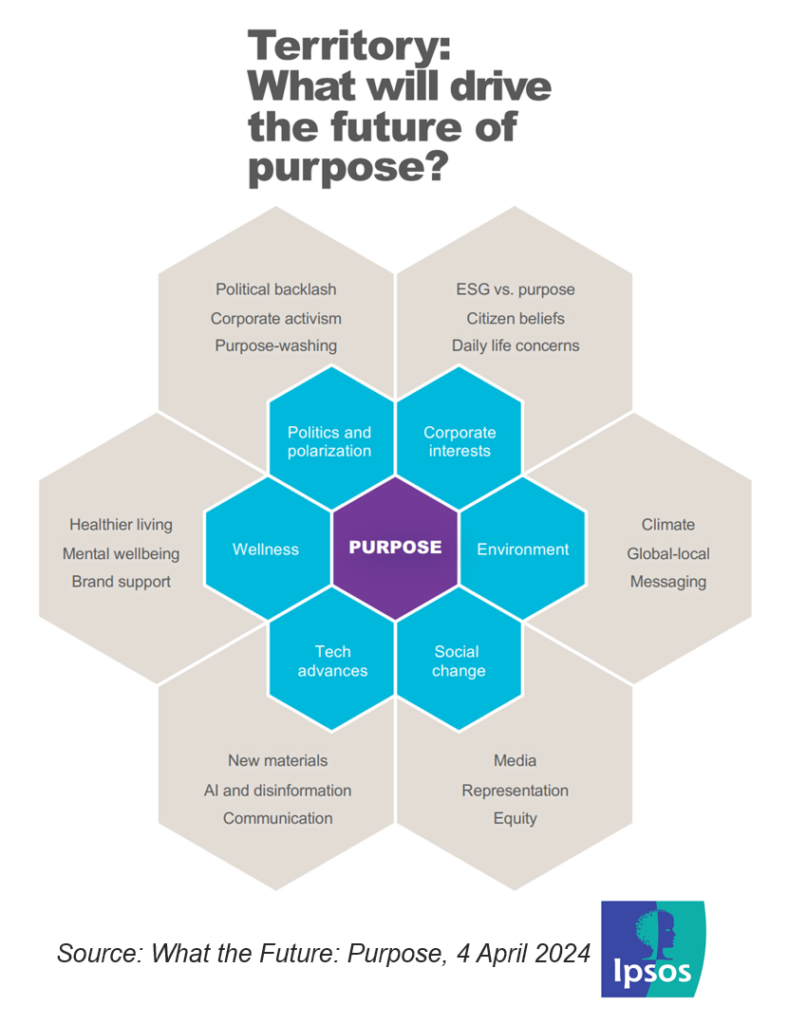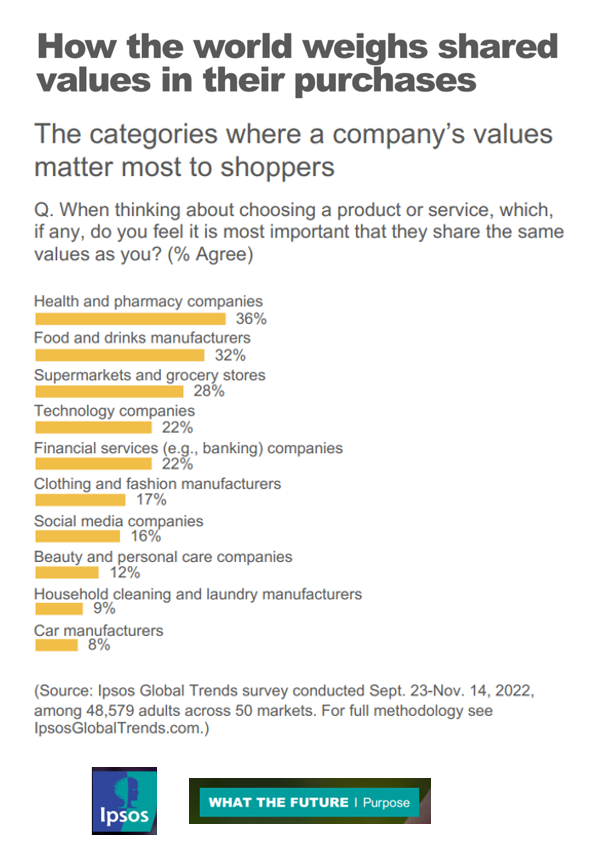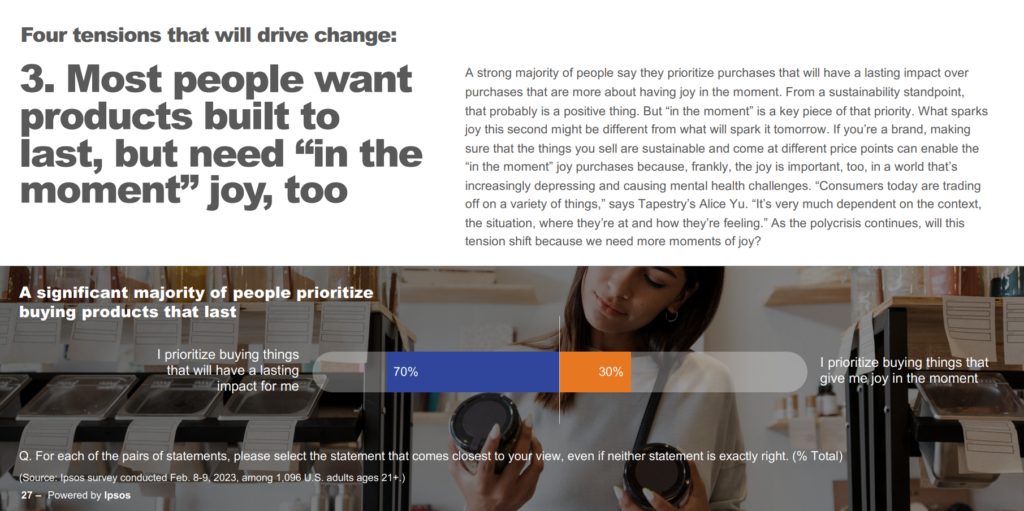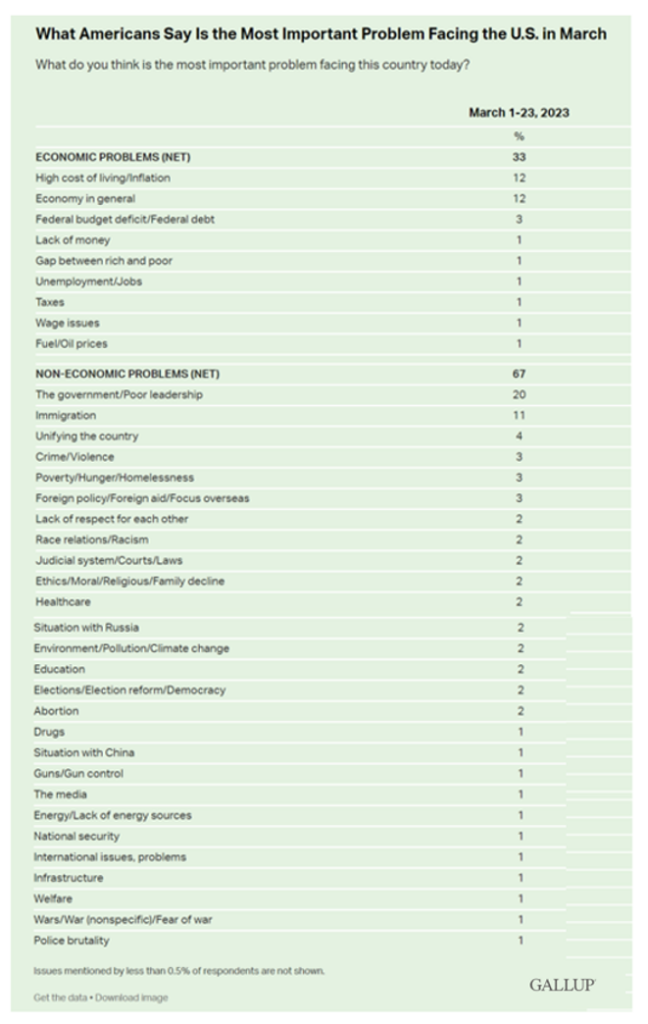If your organization serves health consumers, patients, and caregivers, and you’re asking them to spend money on your services or products, then you’ll do well to be clear on your values and sense of purpose.
In the latest Ipsos look into the future of “Purpose,” we find that consumers look most to health and pharmacy companies for shared values, compared with other industries people patronize such as food and grocery, technology and banks.

To understand where Ipsos is coming from on this aspect of ESG, we’ll start with their territory map of the various factors that drive the future of purpose.
The honeycomb diagram arrays those drivers, fanning out from Purpose at the center: the immediate six macro factors are politics and polarization, corporate interests, environment, social change, technology advances, and wellness.
Each of these six corresponds to several other micro considerations: for wellness, these include healthier living, mental wellbeing, and brand support. We can brainstorm additional impacts for wellness, but we should also incorporate the other five factors and micro impacts into our thinking about Purpose in health/care.
For example, in this moment, we might need to consider future scenarios on the role of AI in healthcare and medicine int he context of the driver, technology advances. In the diagram, Ipsos calls out “AI and disinformation” and “Communication.” Both will be key in our thinking today about AI’s role in health/care and building trusted relationships with patients and consumers “tomorrow” (which is really today).

Ipsos asked people to think about choosing a product or service, and assess how important it would be for each to share their values. The bar chart graphs the granular data on the industry categories where a company’s values matter most to consumers.
Health and pharmacy top this list, cited by 36% of global consumers. Next come food and drinks makers (for 32% of consumers), supermarkets and grocery stores (among 28%), and technology and financial services companies (22%).
Cars and household/home care companies rank lowest on this list of ten consumer-facing industries on which people spend money in daily lives.
Most people agree that they want companies and consumers alike to live and shop with purpose, Ipsos found. The most-wanted values consumers seek — with significant gaps between what they want and what is likely to be delivered by the companies — are lessening waste, trying to solve local and global problems, focusing on sustainable products that last.

Health Populi’s Hot Points: “Most people want products built to last, but need ‘in the moment’ joy, too,” Ipsos concluded in a discussion of “tensions” that will drive change.
They ask the important question, “As the polycrisis continues, will this tension shift because we need more moments of joy?”

The polycrisis is this moment of many moving parts/challenges and emotions: as Gallup’s latest poll (March 2023) on what Americans say are the most important problems facing the U.S. in March 2023, these were:
- The government/poor leadership (20% of U.S. adults)
- The high cost of living/inflation (12%)
- Economy in general (12%), and
- Immigration (11%).
Add into the mix of the pokycrisis, we can point to global unrest (namely, the Ukraine invasion and ongoing defense of democracies worldwide), the public health crises of guns and mass shootings as well as the Deaths of Despair (due to accidents, overdoses, and firearms), and lack of social cohesion — what Ipsos calls out as polarization in the honeycomb futures map under the Politics driver.
So “Joy” becomes an increasingly important factor that people seek as part of their own personal, familial, and social sustainability.
I’ll be speaking about the Joyconomy (coined by Wunderman Thompson) at the Virgin Thrive Summit on 11th April 2022 embedded in my discussion of The Drivers of Health: Yesterday, Today, and Tomorrow. Stay tuned for my summary of the talk on the 12th here in Health Populi...




 Interviewed live on BNN Bloomberg (Canada) on the market for GLP-1 drugs for weight loss and their impact on both the health care system and consumer goods and services -- notably, food, nutrition, retail health, gyms, and other sectors.
Interviewed live on BNN Bloomberg (Canada) on the market for GLP-1 drugs for weight loss and their impact on both the health care system and consumer goods and services -- notably, food, nutrition, retail health, gyms, and other sectors. Thank you, Feedspot, for
Thank you, Feedspot, for  As you may know, I have been splitting work- and living-time between the U.S. and the E.U., most recently living in and working from Brussels. In the month of September 2024, I'll be splitting time between London and other parts of the U.K., and Italy where I'll be working with clients on consumer health, self-care and home care focused on food-as-medicine, digital health, business and scenario planning for the future...
As you may know, I have been splitting work- and living-time between the U.S. and the E.U., most recently living in and working from Brussels. In the month of September 2024, I'll be splitting time between London and other parts of the U.K., and Italy where I'll be working with clients on consumer health, self-care and home care focused on food-as-medicine, digital health, business and scenario planning for the future...